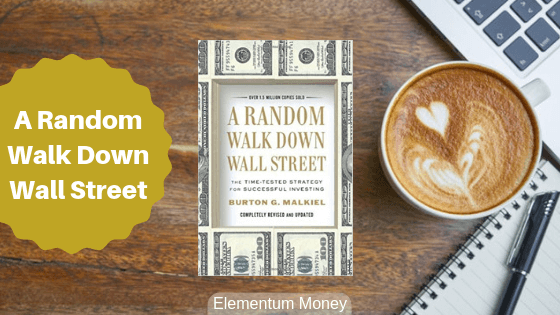When most people think of financial planning, it seems like a mass of complex, difficult concepts easier to ignore than pay attention to and work on. But, as I discussed in a prior post, financial planning can be easily broken down into three main concepts – Emergency fund, risk management through insurance and goal based investing. While the second and third concepts have been discussed at length, I realize the missing loop was the Emergency Fund which merits a complete guide of it’s own.
What is an Emergency Fund?
For most of my life, sometimes by choice and sometimes thanks to a liquidity crunch I have lived a paycheck to paycheck life. I still remember the months when I had to book two air tickets or a sudden requirement which left me worried about surviving the month. While I could have always borrowed from my parents, it was not an option I was particularly keen on.
There are many kinds of emergencies which crop up without any warning, and end up requiring a fair amount of money to be pitched in for resolution. It could be as easy or harmless as some home or car repair or it could be serious enough as a job loss. If you do not have some easily accessible, liquid money to tide you over, where does that leave you?
The problem is that in this era of instant gratification, most of us tend to succumb to the temptation of spending it all. In the case of savvy investors, the temptation could be in the other direction of pumping in all the savings into investment assets that are risky but rewarding in the longer run. However, for both kinds of people, having a consistent emergency fund that can cover at least 6 months of your expenses is a smart financial planning habit. In case, you feel fear or insecurity unless you see a certain balance in your account, higher than the six-month expenses, make that your benchmark for the emergency fund.
Why do you need an Emergency fund?
While to me, the idea of needing an emergency fund seems instinctive at a certain level, let me write show three main reasons why it is something you must persevere to stock up on, as a personal finance priority.
Mental peace of mind
As mentioned above, life can often surprise us in unpleasant ways. A lot of those events can be handled more easily when a dearth of money is not an added factor to compound the situation. This is where an emergency fund comes handy. Having that stash of money that can be used to smoothen out life in one of its dips can make it easier to ride.
Instant availability
With financial assets, money can be as illiquid and difficult to convert to cash as real estate or it can be as liquid as sitting in a bank account and easily withdrawn at the swipe of an ATM card. In an emergency fund, the idea is to store enough money in an asset which is liquid, yet grows at least enough to be at par or a little higher than inflation. When you save that money, you should not end up losing out to the gnawing effect of inflation.
No interruption to long term financial goals
To me, this is one of the most important reasons to have an emergency fund. The beauty of financial planning is to make the achievement of large, ambitious financial goals in the future easier by starting early. When you face a situation where you need money, in the absence of an emergency fund, you might be forced to withdraw from one of your ongoing long-term investments. Having an adequate emergency fund means your long term financial goals can continue growing and thriving uninterrupted.
Best assets to park an Emergency Fund
With this role of advising people on money, I have come to realize there are quite a few options that can be used to park emergency funds. Here, I will discuss five such options, with my personal take on each of them.
Savings Account
Now that I get to see so many money stories, I hate observing just how many people end up stashing lakhs and lakhs of rupees in their savings account. Yes, I said it despite yapping on and on about the need for an emergency fund and despite saying that liquid fund is indeed the most liquid option. The fact is that a savings account should have a bare minimum amount that you probably need to tide over month over month. Most savings accounts give an interest rate of 3.5-4{76b947d7ef5b3424fa3b69da76ad2c33c34408872c6cc7893e56cc055d3cd886} and even that amount is taxable beyond Rs. 10,000 in a year (the limit is Rs. 50,000 for senior citizens). So, in essence, you end up with returns less than inflation!
The reason I use the word returns is the fact that in an ideal situation, your emergency fund is supposed to just lie there, gathering dust. Why not have it grow a bit, in as risk-free manner as possible? Also, the fact remains that when you see that money in your savings account every time you log in to internet or mobile banking, the temptation to spend it all is also higher.
Fixed Deposit
Ah, every Indian’s favourite way to pile up money like Uncle Scrooge. However, I am not a fan. Before any of you start stoning me for personal finance heresy, let me tell you why. My biggest reservation with it is the closed rigid nature of locking it in for a pre-defined period. How do you know before hand whether you want it for 7 days or 13 months or 5 years?
Secondly, when you have a tax bracket of 30{76b947d7ef5b3424fa3b69da76ad2c33c34408872c6cc7893e56cc055d3cd886}, in the current scheme of things, even with a 7{76b947d7ef5b3424fa3b69da76ad2c33c34408872c6cc7893e56cc055d3cd886} interest rate, you end up with a real return of 4.9{76b947d7ef5b3424fa3b69da76ad2c33c34408872c6cc7893e56cc055d3cd886}. Does that beat inflation? Hell, no! In case you end up breaking an FD pre-term (since emergencies do not announce themselves before barging into your life), there goes another 1{76b947d7ef5b3424fa3b69da76ad2c33c34408872c6cc7893e56cc055d3cd886} in penalty.
While ignorant me would have happily piled on money in FD, today there are far better assets to opt for when accumulating or maintaining your emergency fund.
Liquid Fund
For most investors who have some experience of the markets, debt or equity, they realize the merits of parking money in a liquid fund as compared to a fixed deposit. Liquid funds are a category of debt funds that invest in very short term papers. In more understandable language, liquid funds end up lending money which is to be repaid in a matter of less than 3 months. In fact, the average maturity of the debt papers in liquid funds mostly tends to be lower than 45 days. Considering the short term lending, it makes them less vulnerable to credit default as well as interest rate volatility.
There is no need to pre-define an investing period. The returns are marginally better than the Fixed Deposit. The best part is that there is no exit load. So even after investing, you want to redeem some amount to tide over an emergency, you get the return that you have earned in the period. In case you end up not having to use your emergency fund for more than three years since the time of investing, then you also get the benefit of indexation and a 20{76b947d7ef5b3424fa3b69da76ad2c33c34408872c6cc7893e56cc055d3cd886} flat rate, leading to much higher real returns than Fixed Deposit at a marginally higher risk.
Ultra Short Funds
Ultra Short funds work on a similar logic as Liquid Funds. The only difference between liquid funds and Ultra Short funds is the fact that they lend for slightly longer periods, mostly in the range of 3 – 6 months, leading to 1-1.5{76b947d7ef5b3424fa3b69da76ad2c33c34408872c6cc7893e56cc055d3cd886} higher returns annually. So, in the last one year, most funds have given a return in the range of 7.5{76b947d7ef5b3424fa3b69da76ad2c33c34408872c6cc7893e56cc055d3cd886} – 8.5{76b947d7ef5b3424fa3b69da76ad2c33c34408872c6cc7893e56cc055d3cd886}. I believe the risks of investing in liquid and Ultra Short funds are pretty similar, which is why in my opinion this category works out better.
Arbitrage Fund
For me, this category has been one of the revelations and enlightenment moments thanks to my job. Arbitrage or specifically equity arbitrage funds work on the principle of mispricing of one asset across different markets.
For instance, at day closing on 25th June 2019, Reliance Industries stock price was 1291.90 on NSE and 1294.55 on BSE. This is just one instance but the fact remains that one asset can be priced differently across markets. These funds take advantage of that mispricing and make gains on that basis.
The returns are pretty stable in the range of 6 – 7{76b947d7ef5b3424fa3b69da76ad2c33c34408872c6cc7893e56cc055d3cd886}. Shocked? Yes, the gross returns are lower than liquid or ultra short funds. However, in my opinion they are less risky as they do not depend on fault credit ratings or the repayment ability of the borrowing entities.
But, the biggest clincher in it’s favour is the fact that it is taxed as Equity! So, your short term is a mere one year long as compared to three years in debt funds. Even in that short term, your gains are liable to be taxed at 15{76b947d7ef5b3424fa3b69da76ad2c33c34408872c6cc7893e56cc055d3cd886} unlike the income tax bracket rule followed for debt. More importantly, in the long term of more than one year, your first one lakh of gains are tax free. Even beyond that, the tax rate is a mere 10{76b947d7ef5b3424fa3b69da76ad2c33c34408872c6cc7893e56cc055d3cd886}.
When you compare real returns and the risk quotient, I would probably recommend spreading your emergency fund between Arbitrage and Ultra Short Debt funds. In the interest of personal disclosure, I am an equities fan and for now all my emergency fund is parked in Arbitrage funds.
Do you have an emergency fund? If not, what is the barrier stopping you from it? If you do, where do you prefer to park it?





Leave a Reply